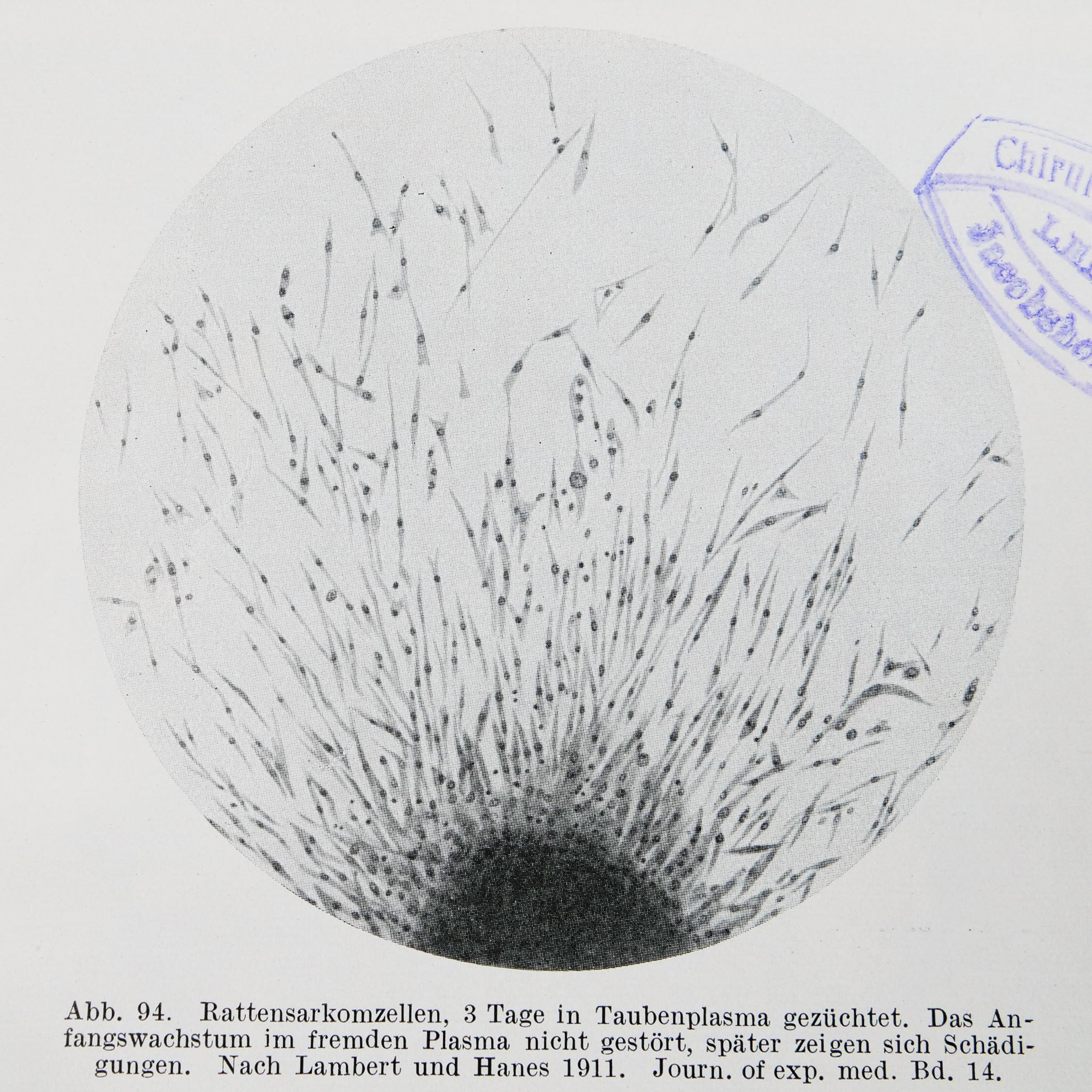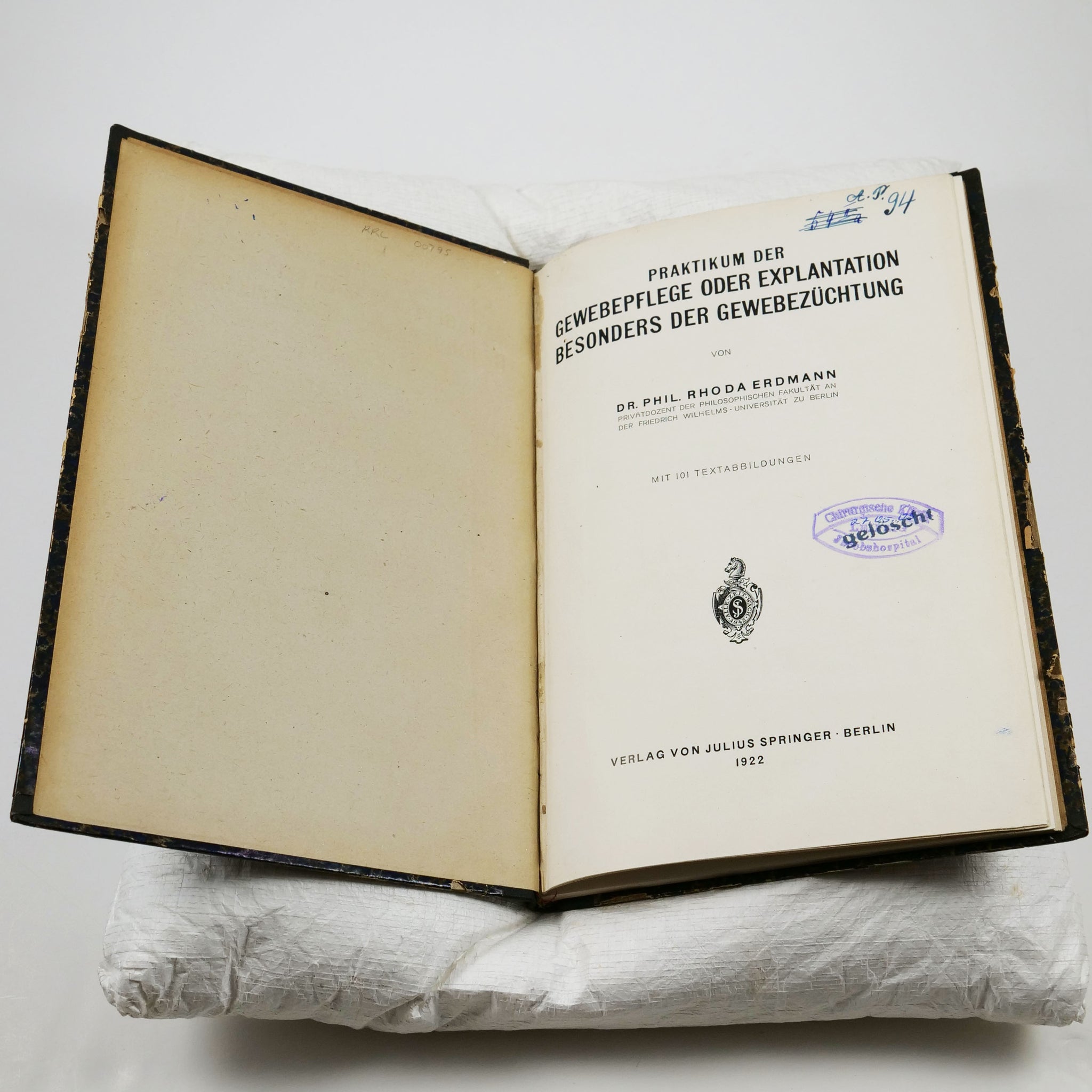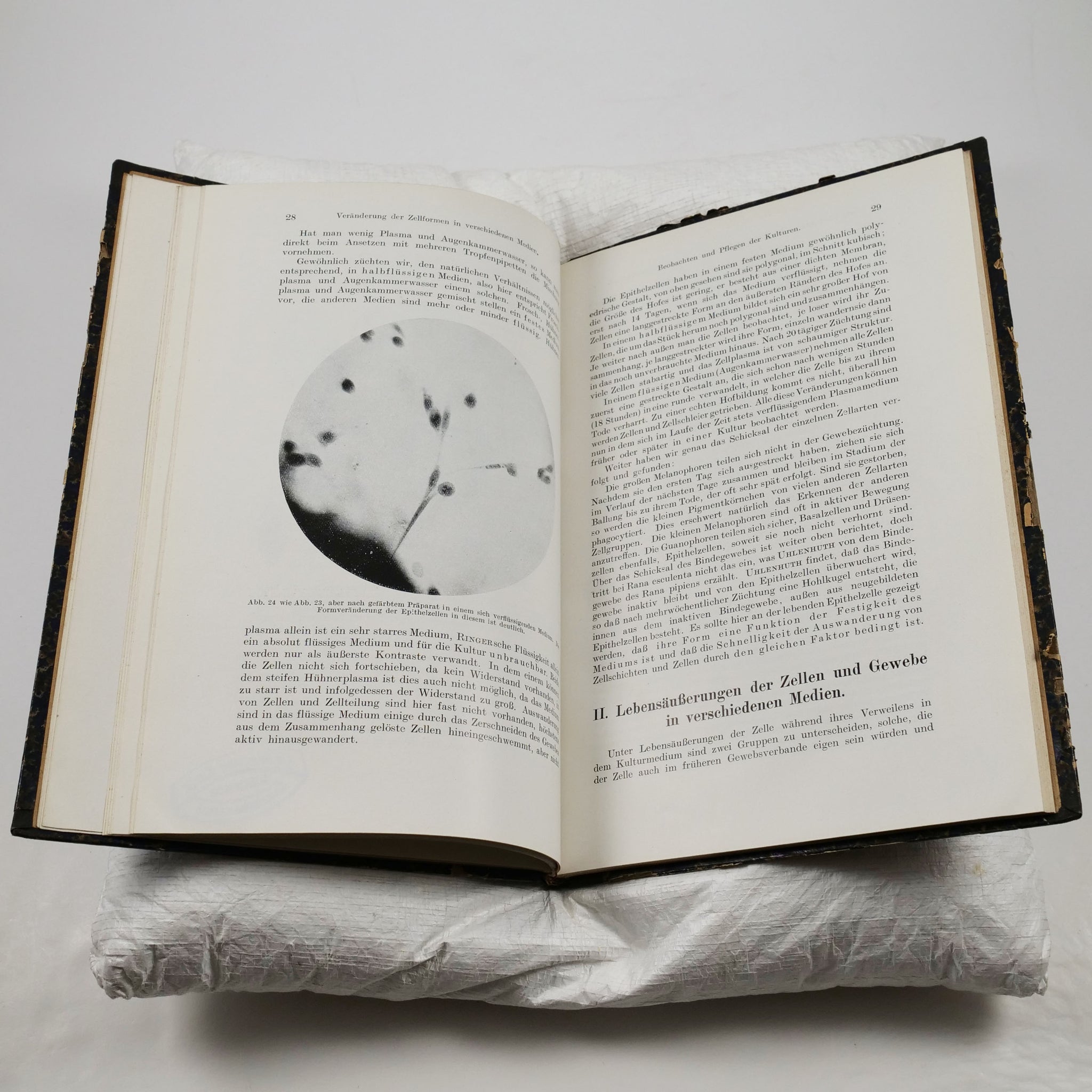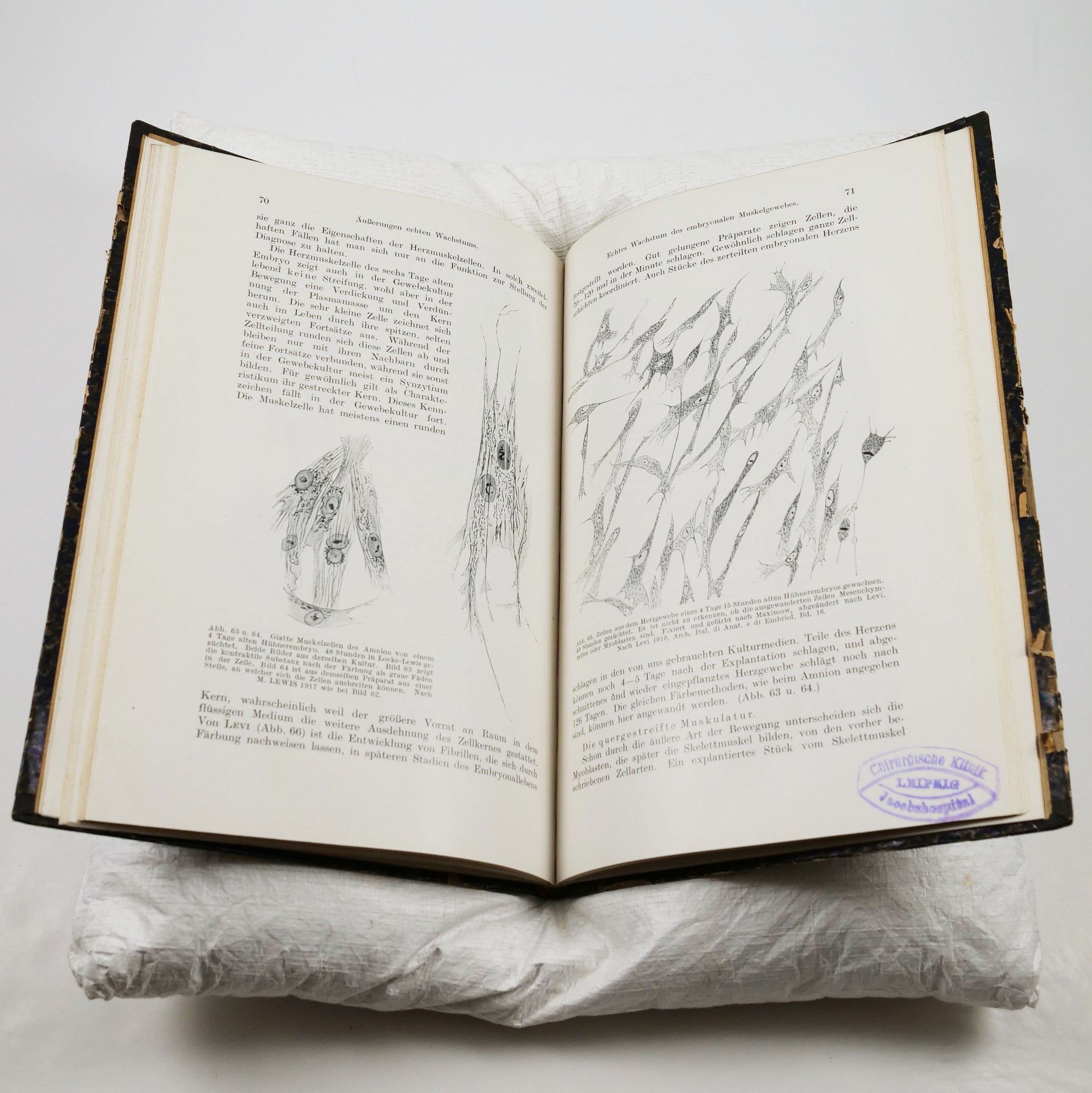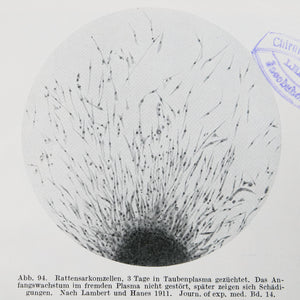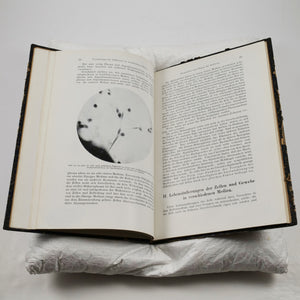Erdmann, Rhoda | Praktikum der Gewebepflege oder Explanation Besonders der Gewebezüchtung
£450.00
-
First edition, first impression of “the first German textbook that provided detailed instructions on tissue culture methods and indicated how they might be applied for cancer research”, by the pioneering cytologist Rhoda Erdmann (Ogilvie, Biographical Dictionary of Women in Science, p. 424). Rare, with only one institutional copy listed in WorldCat, at the University of Groningen.
Erdmann (1870-1935) struggled throughout her career, despite being recognised by her peers as a talented and forward-looking researcher. Her father opposed science as a career, so she only pursued it following his death. After qualifying in 1907, she worked at the University of Munich and did experimental cell research at the Helgoland and Naples zoological stations for her dissertation. She then became a scientific assistant at the Robert Koch Institute for Infectious Diseases, but the poor pay forced her to undertake literary work on the side.
In 1913 the American Lorande Loss Woodruff announced his discovery that paramecium could reproduce asexually seemingly indefinitely. Erdmann had been studying “the importance of sexual reproduction for both nuclear division and death of single-celled organisms” and wrote requesting samples of his cultures (Ogilvie). Instead, her offered her a position a Yale, where she “solved a number of problems related to parthenogenesis. She also updated her techniques of tissue culture under Ross Harrison, head of the Osborn Laboratory at Yale, who had developed new methods of culturing nerve cells” (Ogilvie).
On her way back to Germany in 1914 Erdmann was held as an enemy alien in Britain until she was offered the position of lecturer at Yale by Harrison, “an extraordinary offer since the charter of the university had to be changed to admit her as a woman faculty member” (Ogilvie). With scientific independence and a good salary, this was a productive period in her career, but it came to an end in 1918 when rumours about her research were enflamed by anti-German sentiment. “She was forcibly removed from her position and accused of plotting to poison the New Haven drinking water, and of destroying American chickens with a chicken virus that would poison the brains of American soldiers. After four and a half months in detention in the Waverley House in New York (a prison for ‘wayward girls’), she was released following the intervention of Ross Harrison and American female friends who had paid five thousand dollars in fines… Erdmann’s health suffered for the rest of her life from the results of this incarceration” (Ogilvie).
On her return to Germany, Erdmann was rejected fifty times when applying for positions, but was finally hired by the Friederich-Williams University Institute for Cancer Research in Berlin. “It was a position without additional personnel and no funding for laboratory equipment. Nevertheless, Erdmann established the first German department for experimental cytology in two empty rooms… Initial research conditions were so bad that she figured she had lost the first four years for research” (Ogilvie). Erdmann was not appointed to a teaching teaching post until 1929, and her laboratory did not become a formal university institute until the following year. As late as 1927 she was earning a lower salary than her assistant. “Meanwhile both students and coworkers were attracted to the new field and the medical faculty recognized experimental cytology as an interdisciplinary science important to both medical biology and physiology. Erdmann supplied both fields with assistants well trained in cytology” (Ogilvie).
During this period she also founded an international journal for cell research which had editors and contributors from as far away as Japan, and covered “every branch of cytology, including biochemistry, cell physiology, electrophysiology, and radiation biology. This was the only international scientific publication published by a woman. Erdmann also planned several international cell biology congresses, advertising them in the issues of the journal” (Ogilvie).
The final years of Erdmann’s life were blighted by the rise of the Nazis. She was jailed by the Gestapo for helping Jews escape Germany, and then lost her position under the “Aryan” laws of 1934. She died in Berlin the following year, having “promoted the importance of tissue culture studies in biology and cancer research in her lectures and scientific publications until her untimely death” (Ogilvie).
-
...Mit 101 Textabbildungen. Berlin: Julius Springer, 1922.
Octavo. Contemporary library binding of marbled boards with black cloth backstrip, titles to spine gilt. Illustrations from photographs throughout the text. Inked shelf number to the title, and ink stamps of the Leipzig Surgical Hospital to the title and 9 other leaves. Binding a little worn at the edges. Very good condition.

